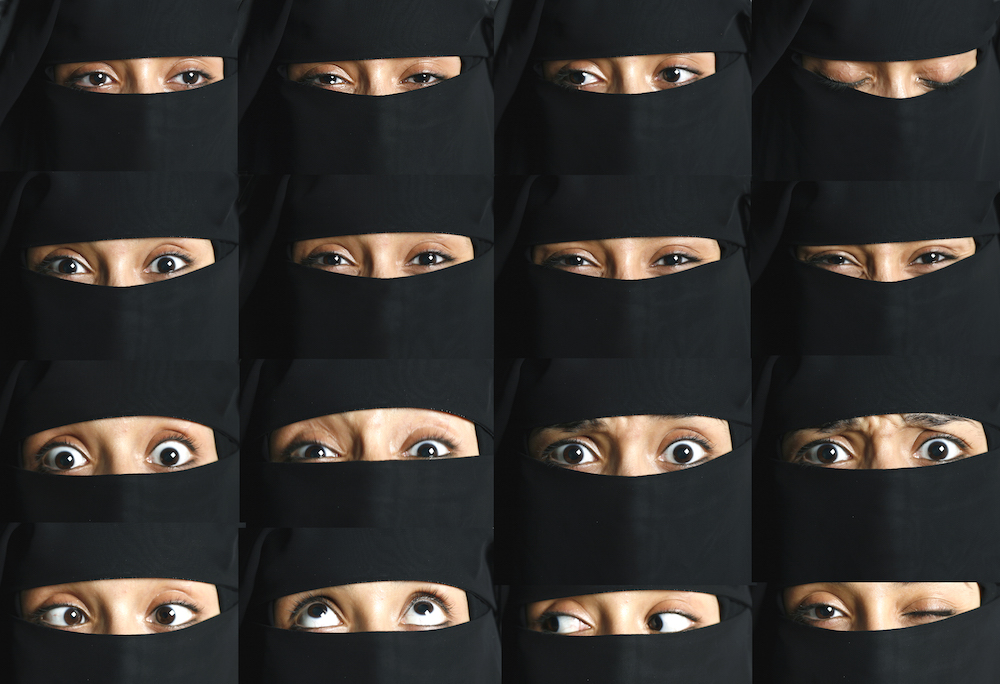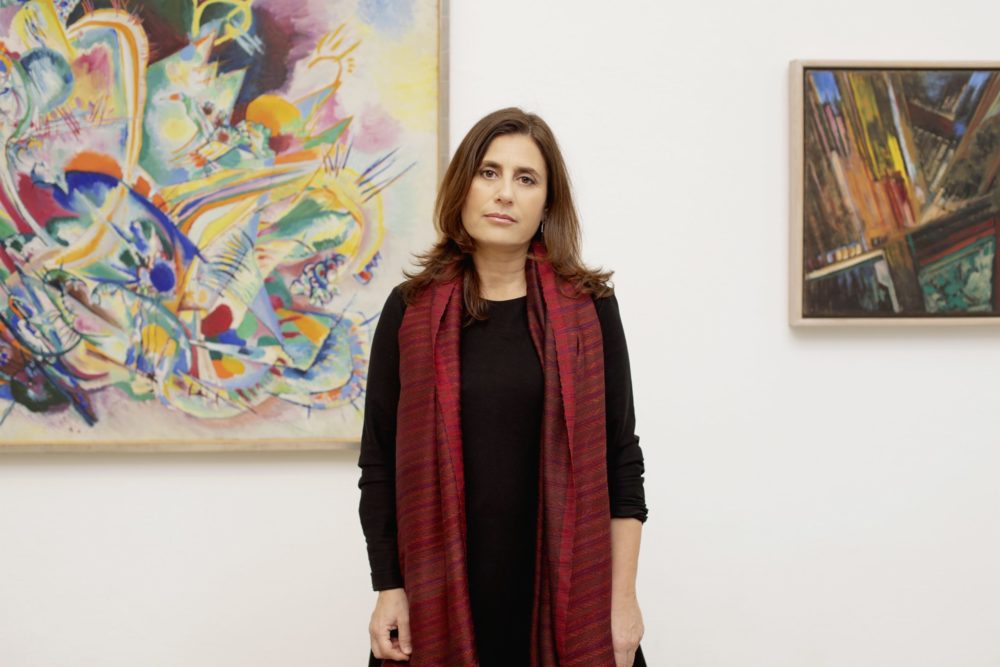Maryam “Mimi” Amini sees the eagle as a spiritual guide. In her search for balance in the mind, body, and energy, the Tehran-based artist recognizes the bird’s ability to fly high in turbulent times and assess its surroundings with its panoramic view. The image of an eagle could be seen on flags and other fabric works in her recent exhibition at Dastan’s Basement in Tehran, “Self-Studies in Flight Methods.”
After speaking with the artist earlier this year for our spring 2020 Art Issue, we checked in this month so see how Amini is doing during the global pandemic. “I had already started this mandatory lockdown three years ago, voluntarily; to practice more the art of “self-soothing” and being present in the moment,” she told us. “While mother nature reminds us to restructure our mindsets and revise our daily routines, my practice has become more tangible with this current phenomenon, with final assessment of all the current beliefs of humans now being put to test. I wish that all structures in all their dimensions, be directed to following more humane and humanistic pursuits.”
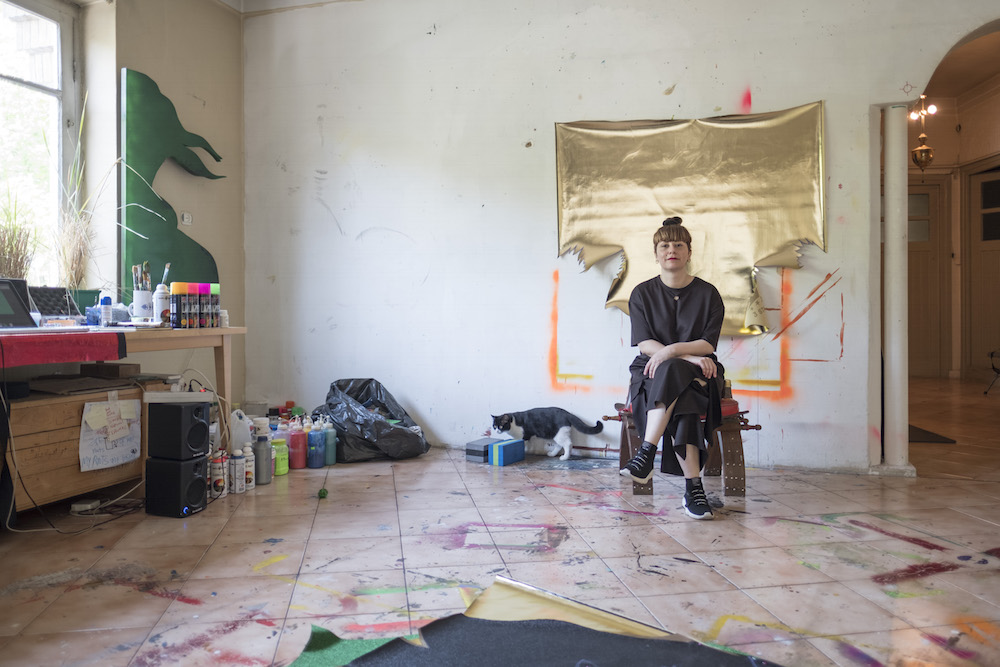
Maryam “Mimi” Amini in her studio, photo by Mehran Danaie.
Amini shared with Whitewall the rigorous method by which she organized her life in pursuit of the present moment. Treating herself, as she described it, as a machine, she followed a strict diet, routine, and reading list. The result is an ongoing practice of self-portraiture.
WHITEWALL: What was the starting point for your recent show at Dastan’s Basement, “Self-Studies in Flight Methods”?
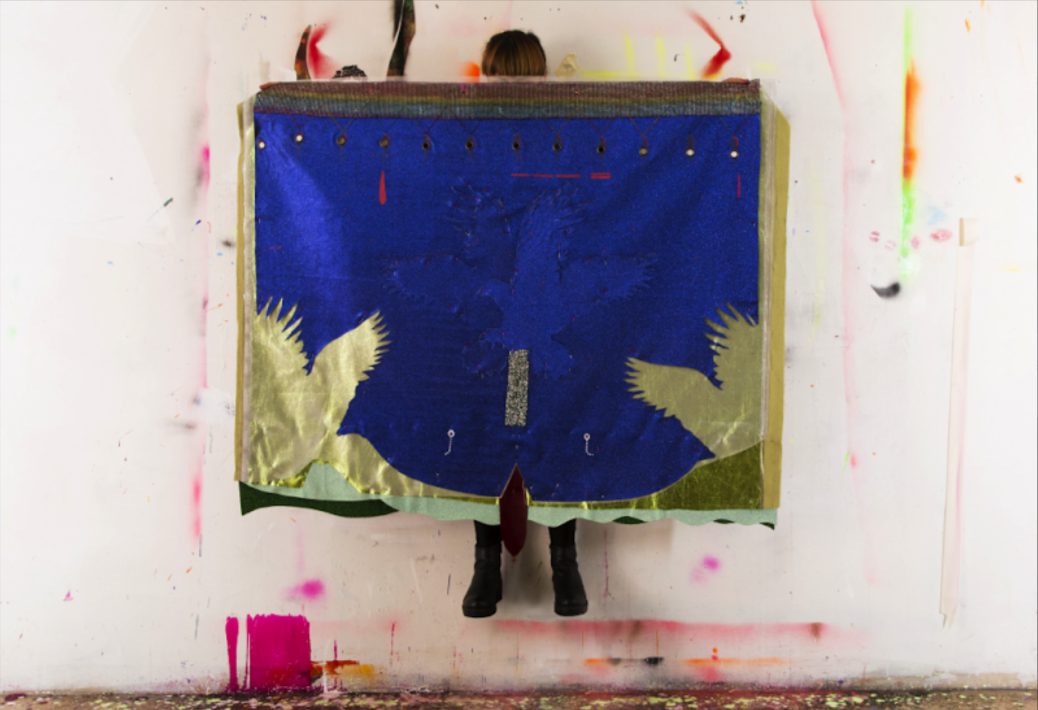
Photo by Matin Jameie, courtesy of Maryam “Mimi” Amini.
MARYAM “MIMI” AMINI: My practice has always revolved around the idea of the self-portrait, which I see in an expanded sense, concerned with my life in its entirety, and as an exercise in self-making. It is a search for balance in and between the body, mind, and spirit.
Similarly, the starting point for the current series of works lies in the decision I made around a couple of years ago to design a particular lifestyle or form of life for myself, one which included certain rules, like dietary restrictions, a daily routine, and a long list of readings about different practices of self-making. It was pretty much like treating myself as a machine and feeding a certain program into it, setting stages for a certain kind of transformation in the self.
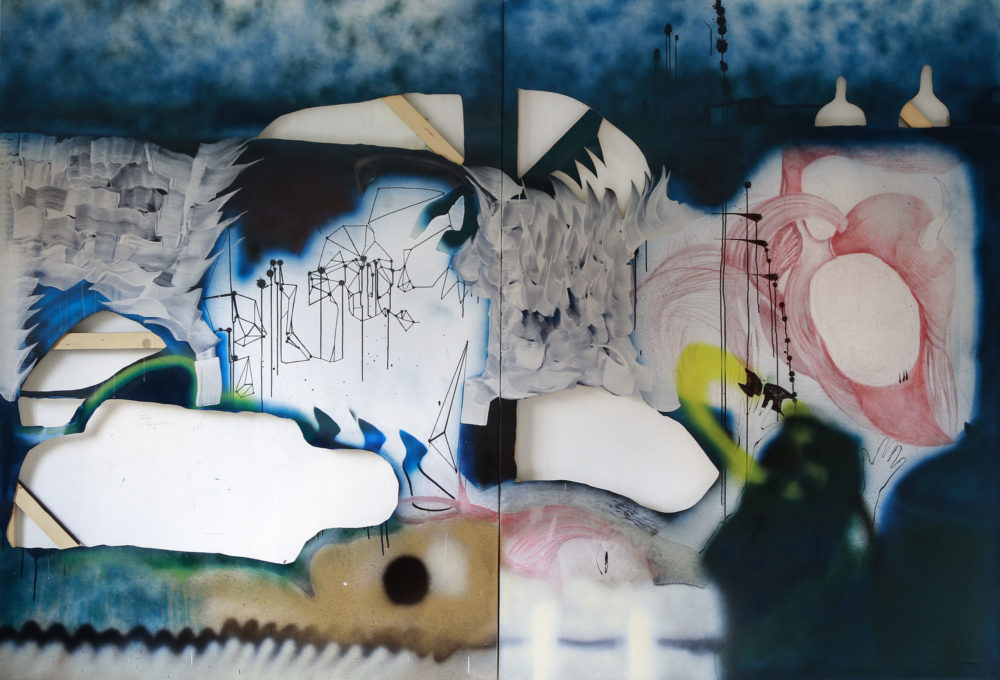
Maryam “Mimi” Amini, “Futureproof”, 2016, mixed media and cut-out on canvas, diptych, 230 x 340 cm, courtesy of the artist and Dastan’s Basement.
This program was centered around what I consider as the energy of the present moment, which can be grasped as an embodiment of light and silence. Therefore, the works I made in this period––the machine’s output––are testimonies to how I tried to get a grip of my sense of self in the here and now, in the midst of constant transformation.
WW: The eagle is an image we see over and over again in this new work. What does it symbolize for you?
MMA: For me, the eagle is a symbol of power and integrity, especially during turbulent times. The eagle flies high up in the sky and has an overall view of how things are in a given situation. It can pick up on a particular element in its bird’s-eye panorama, keep a sharp focus on it, and navigate its way accordingly, only to finally strike in a split second. If it misses the target, the operation is launched from the beginning, but the level of effort for precision is always maintained.
In my recent work, the eagle takes the place of my self portrait because I consider it as my spiritual guide. It might sound a bit narcissistic. But in fact, I take it as a lesson in balance, adequacy, and sufficiency, not unwarranted pride. If the eagle appears repeatedly in my recent show at Dastan’s, it is partly because of the characteristics of some of the works, particularly the “Flags,” which require a certain degree of uniformity and replicability––a flag often demands a logo, a recognizable visual identity, and perhaps so does the program I designed for myself!
The eagle also appears in the “Nomad” series, for which I got inspiration from the traditional clothing of the Bakhtiaris, a nomadic tribe from southwest Iran. Like a painting, each “Nomad” is layered, not with paint but different kinds of fabric, so there is a sense of wearability about them, with the shape of the eagle’s wings cut out from or pinned to the fabrics. The visitors should slide through the “Flags” to enter the exhibition, while the “Nomads” extrude from the walls, hanging from a curved pole. These works are as much visual as they are visceral and haptic, a link between the body and mind.
WW: Do you see your art as its own form of self-healing?
MMA: Well, both yes and no. My art is certainly part of a process of self-healing, but it is not supposed to function as a healing device, or to serve any function at all. As output, my works register and introduce the reparative process that I am engaged in, but they also have a life of their own. There is a tension, which probably originates in a fundamentally abstract approach to the idea of the self-portrait, which is not concerned with representing anything in particular about the self but to present the self as a malleable material for a lifelong process of transformation.
WW: You work in a variety of mediums––painting, sculpture, installation, video, sound, et cetera. How do you move between these mediums in the studio?
MMA: My aim is to bring my paintings closer to an immersive installation, to stretch them across the space. This goes back to years ago when I started cutting into the canvas on which I would paint. The cutouts immediately opened up the two-dimensional surface of the painting toward a three-dimensional space, and the materiality of the painting and its bodily presence came to the fore. This gradually got merged with the photographic and filmic recordings that I tend to make of my painting process in the studio in order to bring different aesthetic registers into play. I do this to further situate my paintings in an atmosphere where different energies, spaces, textures, and mediums are constantly translated into each other. And the space of my studio, of course, plays a very influential role in shaping this atmosphere of translations and conversions.
WW: Can you describe your studio space for us? What is a typical day in the studio like for you?
MMA: My studio is the largest room in the house I live in. It is a very old building with a distinct architecture, sitting by an iconic square in northern Tehran. I think it is like a piece of art in itself, and it is as much a workplace for me as it is my temple. I have a view of the square and the fountain at its center from the windows in my studio, and as soon as I step out from the building there is always something going on in the area.
A lot of people travel to this part of the city to spend a nice day out with their family and friends. It is located just at the bottom of the mountains and the former royal palace, now open to the public, is around the corner, with beautiful and serene trails skirting across its gated landscape. It is also a very special place for me to host others, as I think it gives them a unique experience of my works in the same place they were born. I even had the idea of turning my studio into one of the venues for “Self-Studies,” but it proved much more complicated than I had anticipated.
WW: How would you describe your creative community in Tehran?
MMA: My community includes a variety of people. As far as the art scene goes, I would like to particularly point out a small number of artist-run spaces, for example the Vattan Concept Store, founded by Peyman Shafieezadeh, and 009821 Projects, founded by Iman Safaei. In addition to Dastan’s as the main venue, elements from my last exhibition were conceived in collaboration with these artists and put on display in their spaces. Also, a writer and researcher friend of mine, Mahan Moalemi, has been a very inspiring interlocutor throughout this process. However, others, including the friends with whom I practice yoga or the energy healers and spiritual mentors I might meet with every now and then, are all part of the creative community that enriches my practice and my life in Tehran.




